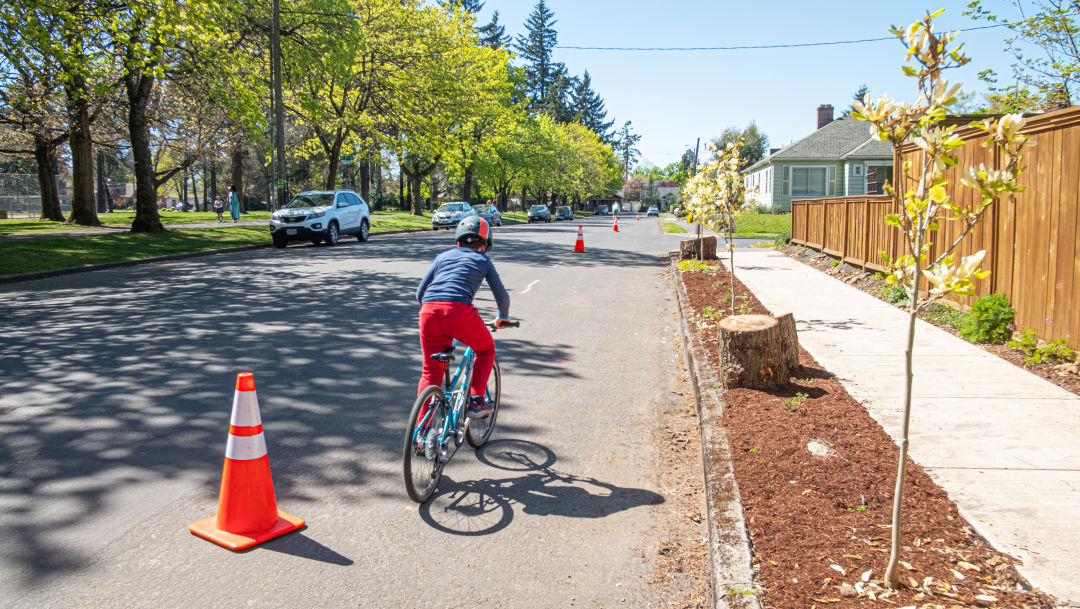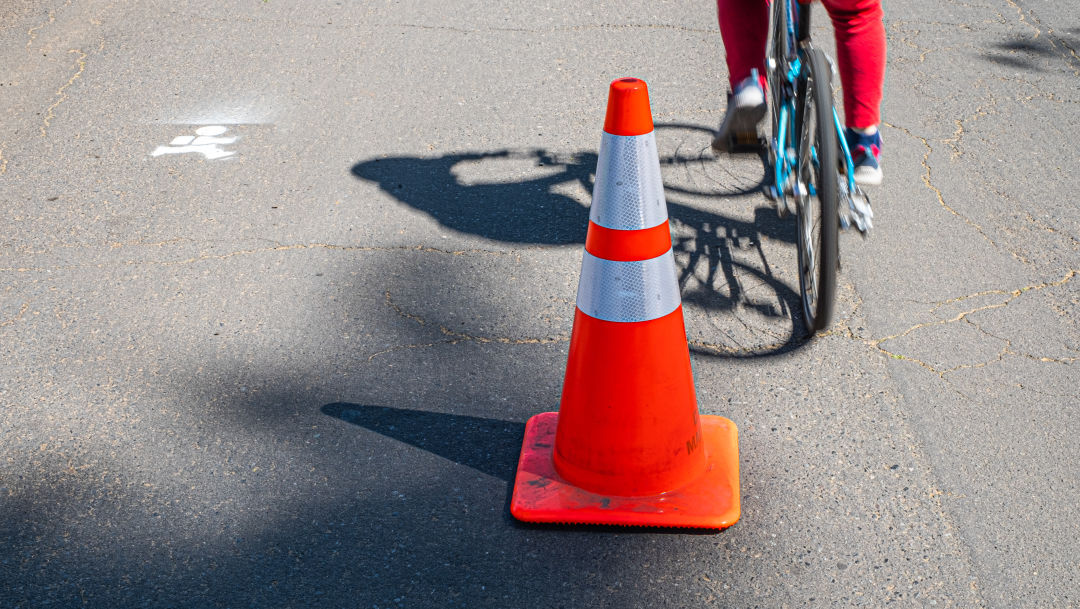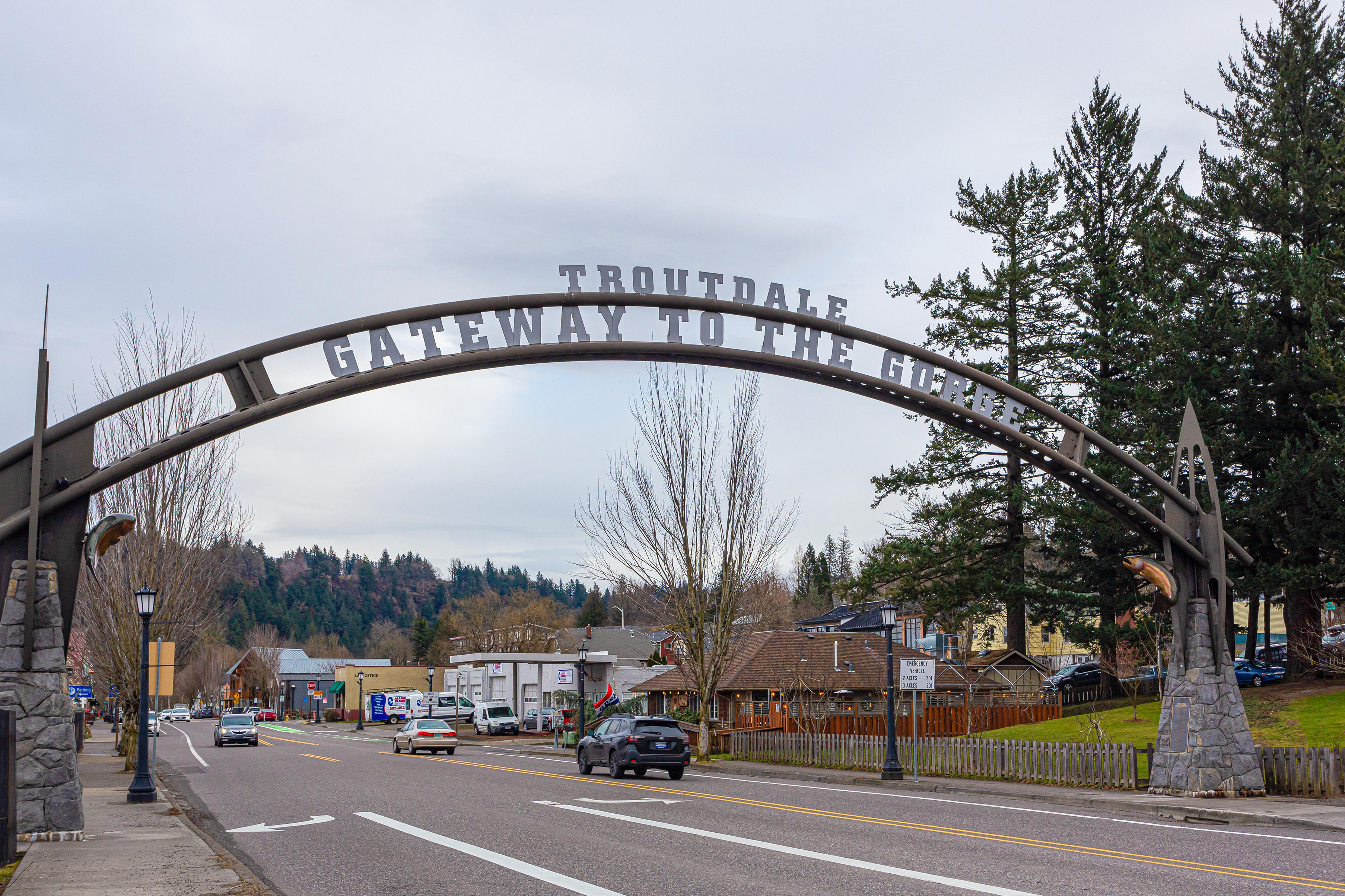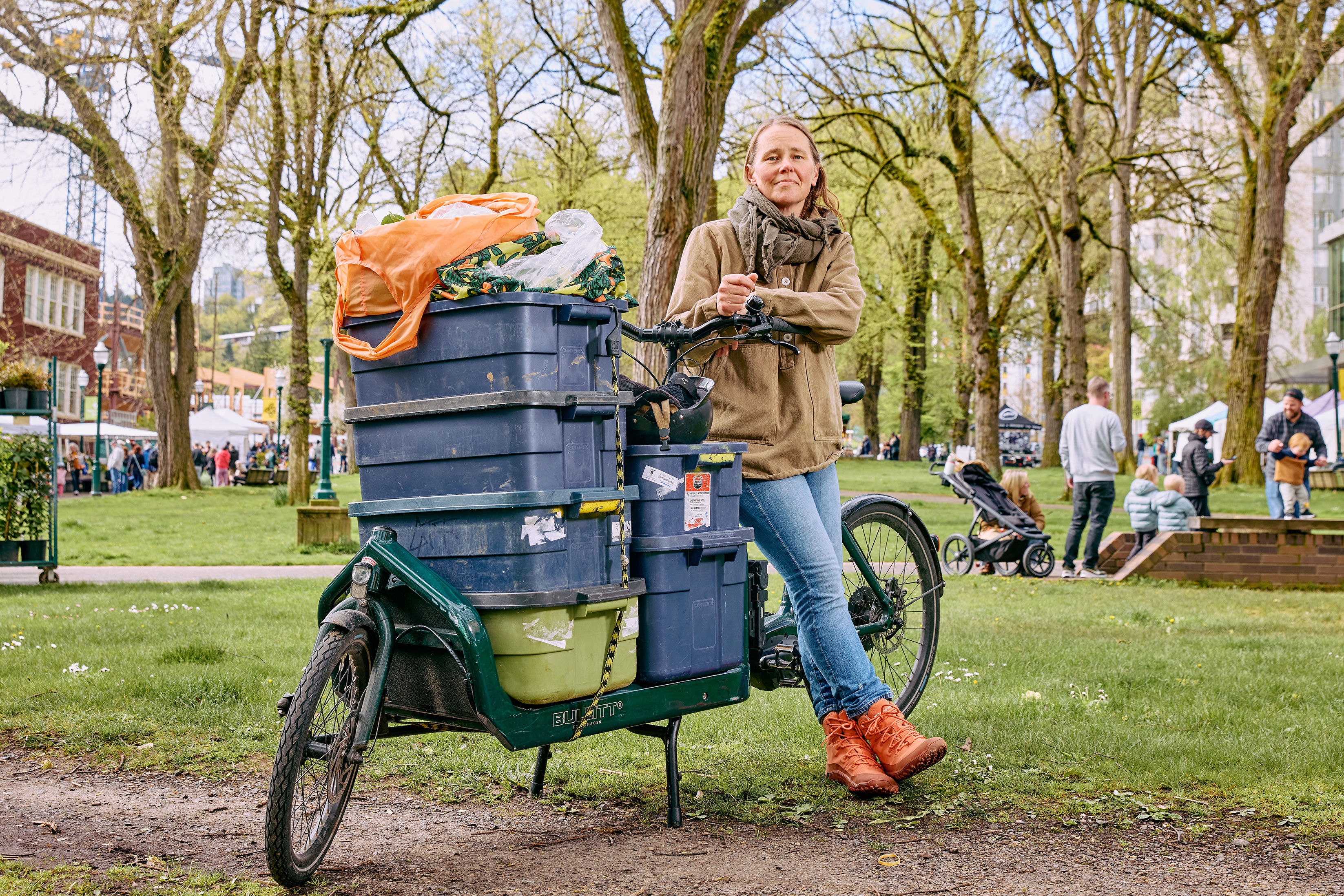Portland City Officials Resist Calls to Close Off Low-Traffic Residential Streets

Some Portland residents aren't waiting for the city to take action, putting out cones and chalking up streets to make more space for socially distant walks and bike rides.
Image: Mike Novak
We can’t go to the beach. The Gorge is closed. Mount Hood is off-limits.
What’s a stir-crazy Portlander to do but head out for yet another walk?
But when everyone else has the same plan (because, let’s get real, that’s basically the only plan in our playbooks right now), going for a neighborhood stroll whilst trying to maintain social distancing on a narrow sidewalk can feel a little like a giant game of Frogger.
And yet, Portland city officials have made it plain that—for now—they have zero intention of following in the footsteps of Oakland, Cleveland, Saint Paul, Minn., and Philadelphia by shutting down some low-traffic residential streets to cars, creating more room for pedestrians, joggers, and cyclists to stay the required six feet apart.
“If we close streets, we risk creating destinations where people would gather,” says John Brady, communications director for the Portland Bureau of Transportation. “That is exactly what we must avoid.”
Pedestrian and cycling advocates aren’t buying that line of argument. Sam Balto, a physical education teacher at Cesar Chavez K-8 School in North Portland, started a petition a month ago on change.org to pitch Mayor Ted Wheeler and Portland City Commissioner Chloe Eudaly, who oversees the city's transportation bureau, on making Portland’s extensive network of neighborhood greenways—spanning 70+ miles of low-traffic residential streets where cyclists are already given priority via sharrows and defined bike lanes—car free (save for neighborhood traffic) for the duration.
“It is really upsetting and surprising how much Ted Wheeler and Commissioner Chloe Eudaly lack the compassion and the foresight to understand that walking and biking isn’t a leisure activity,” Balto says. “We need safe open space for mobility reasons and for physical activity, which directly impacts our social and emotional well-being."
The solution to fears of overcrowding is simple, Balto says: close off streets in every neighborhood so people have a place to walk and bike. “I find it very insulting that our leaders think that we are unruly citizens who are going to start throwing block parties and licking each other’s faces because a street opened up,” he says. “Portland has a strong social contract. People will understand that this means to stay off neighborhood streets and to slow down.”
Logistically, city officials say a change like this would be tough to pull off. Brady pointed out that like many city agencies, PBOT is already down to a skeleton crew, and lacks the firepower to put street closures in place and monitor them to ensure social distancing rules are being followed. Crews that are still on the job, he said, are focused on critical infrastructure projects, like pavement repair, replacement of damaged signs and signals, and building out curb ramps mandated by the Americans with Disabilities Act.
Balto cries foul here too.
“Oakland put out signs and cones,” he says. “That doesn’t require so much manpower. We are not talking about million-dollar infrastructure improvements. Just a sign on all the greenways that says 'no through traffic, these streets are open for social distancing.' It's not rocket science."
What’s more, he points out, opening streets could alleviate crowds flocking to parks during this stretch of beautiful weather, which has inspired the Portland Parks and Recreation bureau to station “greeters” at popular spaces to enforce social distancing rules.
“If you want people to stay home, create what people need,” Balto says. “People need open space to move, so they are driving to parks.”
Take a stroll around any Portland neighborhood right now, and you’ll likely see that residents haven’t waited for the city to take action, but are already walking in the middle of the street, especially since there’s so little traffic on the road these days. (City data shows that vehicle traffic has gone down 50 percent since the stay at home order went into effect in late March.)

A young cyclist on a closed-off residential street
Image: Mike Novak
Brady says the city's aware of this, and that it's been made possible by decades of efforts to make Portland more pedestrian and bike friendly. In some areas, guerrilla neighbors have gone further, using cones and sidewalk chalk to block off portions of the roadway to cars.
Balto says the debate over the streets is also an issue of socioeconomic equity.
“They are forgetting people like my students, who live in an apartment complex with no open space,” he says. “How are they supposed to get out and move and breathe?”
Wheeler, for his part, hasn’t entirely closed the door on the question of closing down lanes to cars. He tweeted on Monday that the city will continue to “adjust and adapt to what’s in the best interest of public health...More to come.”




